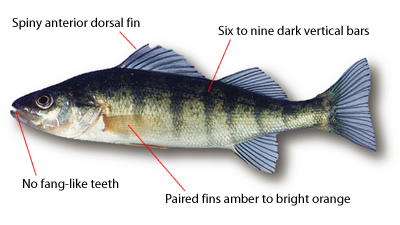Contents
-
Fish and Wildlife
- Fish
- Wildlife
- Habitat
- Wildlife Act Review
- FrontCounter BC
- Regional Offices
- Contact Us
- Site Map
Certificate of Insurance:
 |
 |
 |
||
 |
 |
 |
||
 |
 |
 |
||
 |
 |
 |
 |
 |
 |
 |
 |
 |
 |
 |
 |
 |
 |
 |
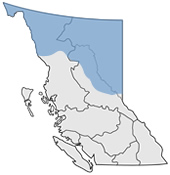
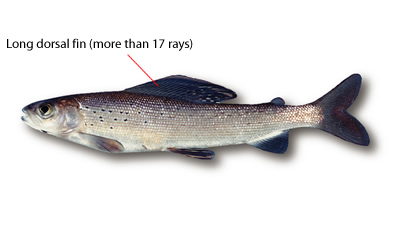
Grayling. Sometimes incorrectly called whitefish.
Typical range in length for adults: 15-50cm
Maximum length: 75cm
Typical range in weight for adults: 1-2kg
Maximum weight: 2.7kg
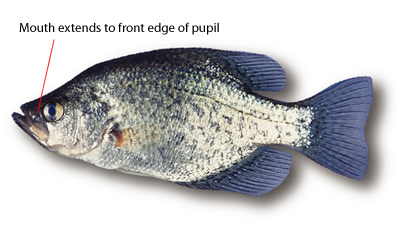
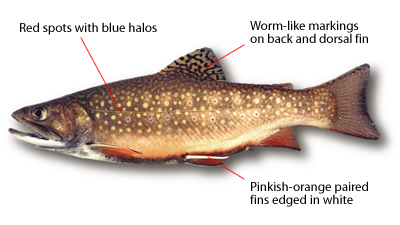
Eastern Brook Trout, Speckled Trout,
Coaster Trout, Coasters
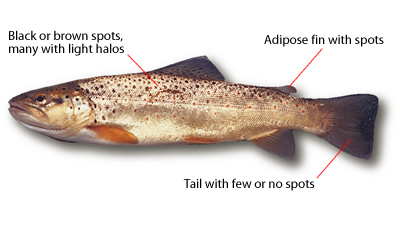
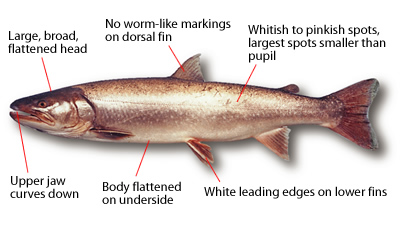
Sometimes incorrectly referred to as Dolly Varden Trout

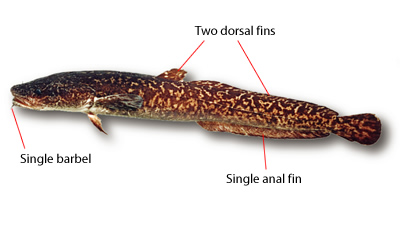
It has a variety of names across North America. In B.C. it is often called ling or freshwater cod. Sometimes it is incorrectly referred to as ling cod; ling cod is a saltwater fish unrelated to the burbot.
Typical range in length for adults: 30-75cm
Maximum length: 90cm
Typical range in weight for adults: 1-7kg
Maximum weight: 9kg
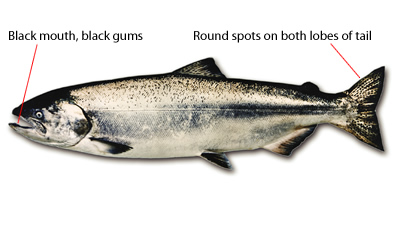
Spring Salmon, King Salmon, Tyee Salmon, Columbia River Salmon, Black Salmon, Chub Salmon, Hook Bill Salmon, Winter Salmon, Quinnat Salmon and Blackmouth
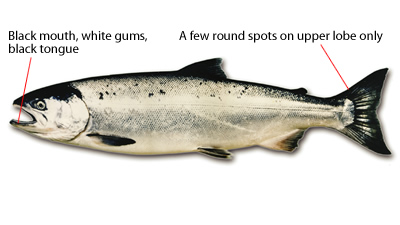
Silver Salmon
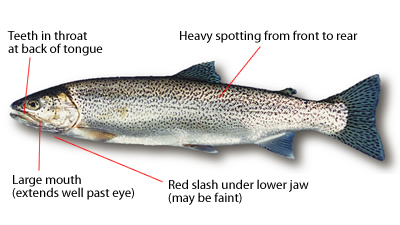
Yellowbellies, cutties, cutts, harvest trout, sea trout.
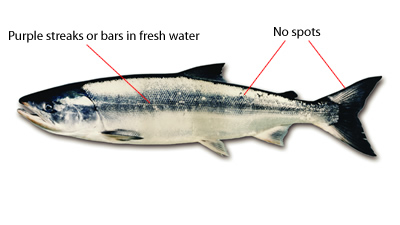
Dog Salmon, Keta Salmon, Silverbrite Salmon
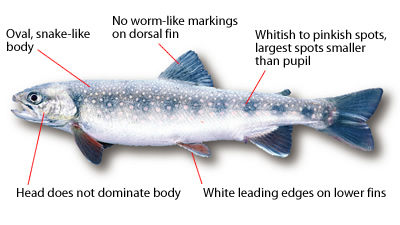
Dollies, sometimes bull trout. They are often confused with bull trout, since these two different species of char are very similar looking. Until recently (the late 1980s and early '90s) they were believed to be the same species.
Length range for resident adults: 7-45cm
Maximum weight for resident fish: 1kg
Length range for anadromous adults: 30-60cm
Maximum weight for anadromous fish: 2.3kg
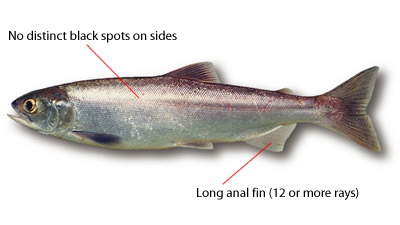
Kickininee, Little Redfish, Silver Trout, Landlocked Sockeye, Blueback
Typical range in length for adults: 20-25cm
Maximum length: 60cm
Typical range in weight for adults: 0.1-0.2kg
Maximum weight: 4.5kg
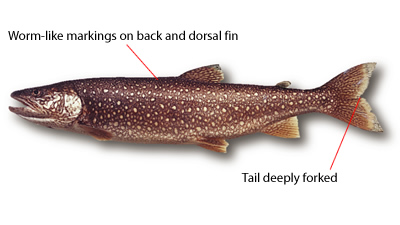
Char, grey trout, lake char, laker
Typical range in length for adults: 45-65cm
Maximum length: 125cm
Typical range in weight for adults: 1-3kg
Maximum weight: 21kg
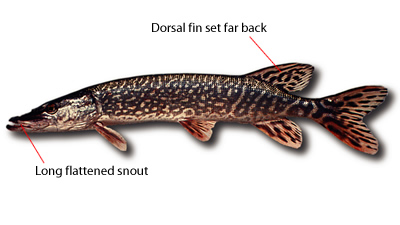
Pike, Great Northern Pike, Jack, Jackfish, Pickerel
Typical range in length for adults: 45-75cm
Maximum length: 117cm
Typical range in weight for adults: 0.5-4kg
Maximum weight: 13kg
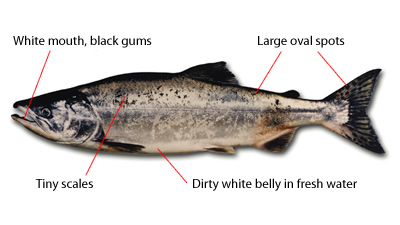
Humpback Salmon
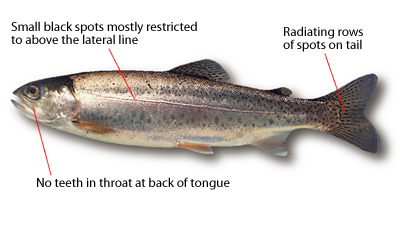
Kamloops Trout, Gerrard Trout, Silver Trout, Redband Trout, and Steelhead
Typical range in length for adults: 30-75cm
Maximum length: 90cm
Typical range in weight for adults: 1-7kg
Maximum weight: 9kg
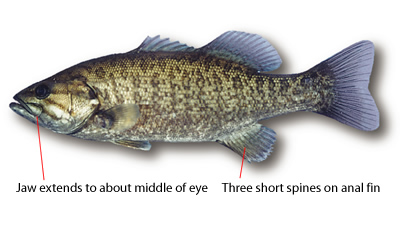
Smallmouth, Bronzeback, Brown Bass, Brownie, Smallie, and Bronze Bass
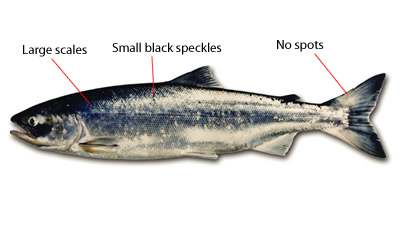
Red Salmon, Blueback Salmon
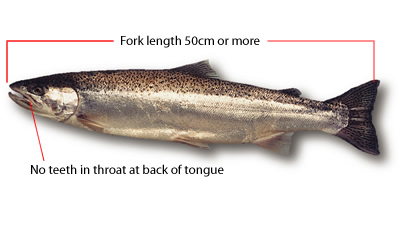
Historically they were called steelhead-salmon, salmon-trout or in some areas, hardhead.
Typical range in length for adults: 50-85cm
Maximum length: 120cm
Typical range in weight for adults: 1.4-6.8kg
Maximum weight: 21kg
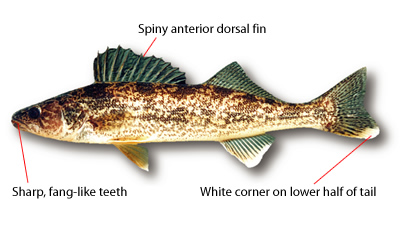
Pike-perch, Pickerel
Typical range in length for adults: 30-50cm
Maximum length: 70cm
Typical range in weight for adults: 0.5-1kg
Maximum weight: 5kg
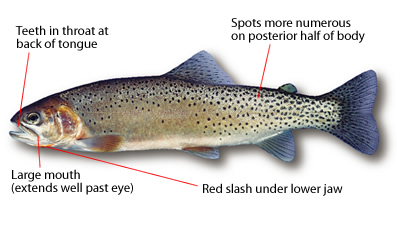
Blackspotted Cutthroat
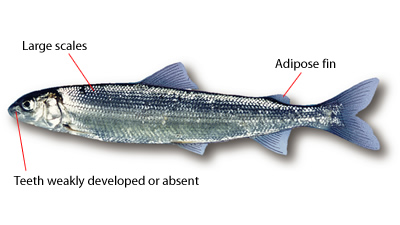
Rocky Mountain whitefish. It is sometimes incorrectly called grayling.
Typical range in length for adults: 15-45cm
Maximum length: 58.5cm
Typical range in weight for adults: 0.5-1.3kg
Maximum weight: 2.3kg
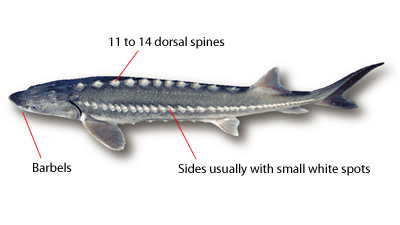
Pacific Sturgeon, Oregon Sturgeon, Columbia Sturgeon, Sacramento Sturgeon, California White Sturgeon
